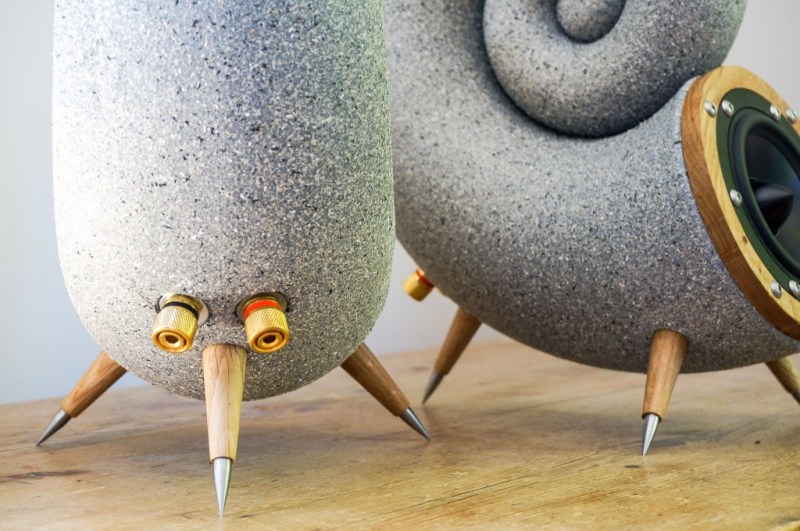We all maintain this balancing act between the cool things we want, the money we can spend, and our free time. When the pièce de résistance is a couple of orders of magnitude out of our budget, the only question is, “Do I want to spend the time to build my own?” [Nick Charlton] clearly answered “Yes,” and documented the process for his Nautilus speakers. The speaker design was inspired by Bowers & Wilkins and revised from a previous Thingiverse model which is credited.
The sound or acoustic modeling is not what we want to focus on since the original looks like something out of a sci-fi parody. We want to talk about the smart finishing touches that transform a couple of 3D printed shells into enviable centerpieces. The first, and most apparent is the surface. 3D prints from consumer FDM printers are prone to layer lines, and that aesthetic has ceased to be trendy. Textured paint will cover them nicely and requires minimal elbow grease. Besides sand and shells go together naturally. At first glance, the tripod legs holding these speakers seemed like a classy purchase from an upscale furniture store, but they are, in fact, stained wood and ground-down bolts. Nicely done.
The moral is to work smarter, take pictures, then drop us a line.
















“The sound or acoustic modeling is not what we want to focus on since the original looks like something out of a sci-fi parody”
Actualy, Horn speakers are very good. It’s all in the accoustics, a science that’s to hard for me.
I suppose horn speakers can be very good, but in this case the author says on the website that sound is not optimal because the internal volume is not matched to the drivers. Still the build is impressive!
> Actualy, Horn speakers are very good.
While that may be the case, the featured speakers are no horn speakers, nor are the original B&W Nautilus speakers.
Horn speakers are all about matching the acoustic impedance of the speaker to that of the surrounding air, to give the speaker something heavy to push against. This happens in the front of the speaker, these speakers here have nothing in the way of a horn.
As with all loudspeakers, the goal is to simulate an infinite volume behind the driver, the original Nautilus by B&W attempted to replicate this using tapered tubes with the spiral acting as a very long tapered tube to dissipate the sound energy so reflection against the back of the driver is very little.
“the original looks like something out of a sci-fi parody”
It immediately reminded me of the works of artist Shaun Tan.
https://www.google.com/search?tbm=isch&q=shaun+tan